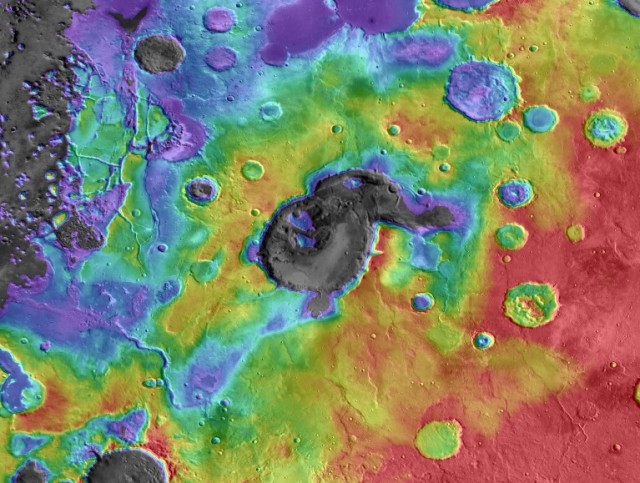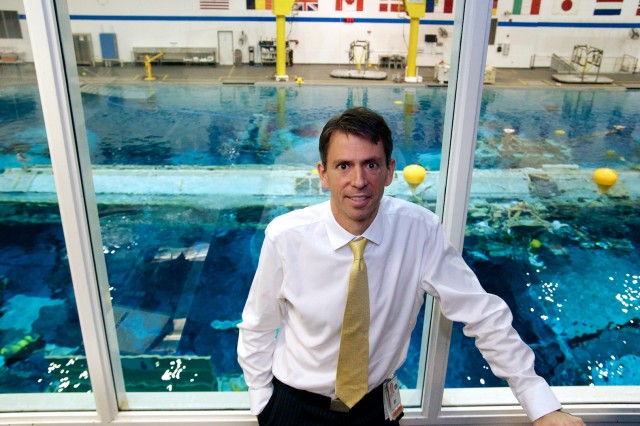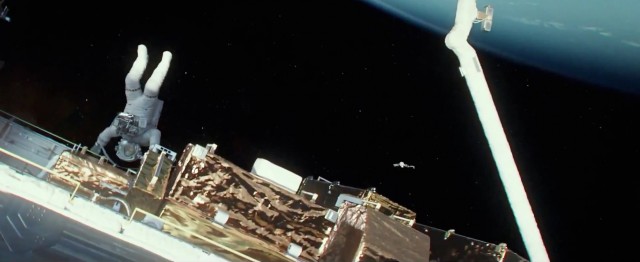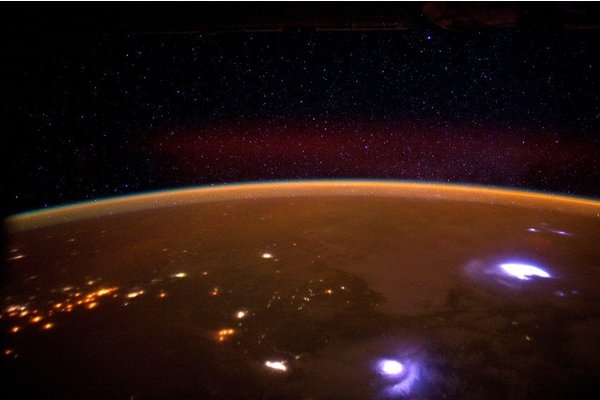NASA is preparing to launch a 3-D printer into space next year, a toaster-sized game changer that greatly reduces the need for astronauts to load up with every tool, spare part or supply they might ever need.
The printers would serve as a flying factory of infinite designs, creating objects by extruding layer upon layer of plastic from long strands coiled around large spools. Doctors use them to make replacement joints and artists use them to build exquisite jewelry.
In NASA labs, engineers are 3-D printing small satellites that could shoot out of the Space Station and transmit data to earth, as well as replacement parts and rocket pieces that can survive extreme temperatures.
"Any time we realize we can 3-D print something in space, it's like Christmas," said inventor Andrew Filo, who is consulting with NASA on the project. "You can get rid of concepts like rationing, scarce or irreplaceable."
The spools of plastic could eventually replace racks of extra instruments and hardware, although the upcoming mission is just a demonstration printing job.
"If you want to be adaptable, you have to be able to design and manufacture on the fly, and that's where 3-D printing in space comes in," said Dave Korsmeyer, director of engineering at NASA's Ames Research Center at Moffett Field, about 35 miles (55 kilometers) south of San Francisco.
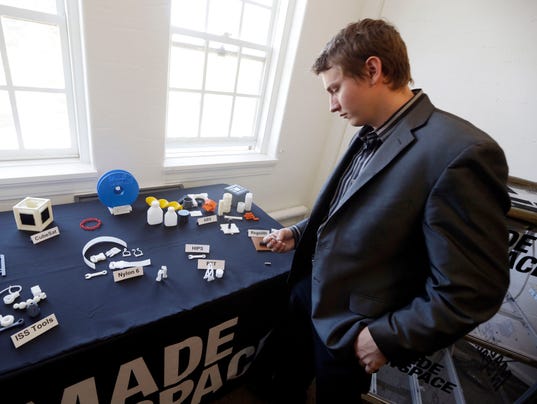 |
| Aaron Kemmer, CEO and co-founder of Made in Space, looks through some items made with the company's 3D printer which will eventually be used in space on Monday in Mountain View, Calif.(Photo: Marcio Jose Sanchez, AP) |
For the first 3-D printer in space test slated for fall 2014, NASA had more than a dozen machines to choose from, ranging from $300 desktop models to $500,000 warehouse builders.
All of them, however, were built for use on Earth, and space travel presented challenges, from the loads and vibrations of launch to the stresses of working in orbit, including microgravity, differing air pressures, limited power and variable temperatures.
As a result, NASA hired Silicon Valley startup Made In Space to build something entirely new.
"Imagine an astronaut needing to make a life-or-death repair on the International Space Station," said Aaron Kemmer, CEO of Made in Space. "Rather than hoping that the necessary parts and tools are on the station already, what if the parts could be 3-D printed when they needed them?"
When staffing his start up in 2010, Kemmer and his partners warned engineers there would be ups and downs — nauseating ones. In more than a dozen flights in NASA's "vomit comet" reduced-gravity aircraft, Made In Space scientists tested printer after printer.
Last week at their headquarters on NASA's campus, Made In Space engineers in lab coats and hair nets tinkered with a sealed 3-D printer in a dust free cleanroom, preparing the models for further pre-launch tests.
As proof of its utility, the team revisited the notorious 1970 moon-bound Apollo 13 breakdown, when astronauts were forced to jerry-rig a lifesaving carbon dioxide filter holder with a plastic bag, a manual cover and duct tape. A 3-D printer could have solved the problem in minutes.
"Safety has been one of our biggest concerns," said strategic officer Michael Chen. Sparks, breakages and electric surges can have grave consequences in the space station. "But when we get it right, we believe these are the only way to manifest living in space," he said.
Space-bound printers will also, eventually, need to capture gasses emitted from the extruded plastics, be able to print their own parts for self-repairs and have some abilities to recycle printed products into new ones.
Scott Crump, who helped develop 3-D printing technology in 1988 by making a toy frog for his daughter with a glue gun in his kitchen, said he never conceived how pivotal it could be for space travel. But he said that until metal becomes commonly used in 3-D printers, the applications will be limited.
"The good news is that you don't have to have this huge amount of inventory in space, but the bad news is now you need materials, in this case filament, and a lot of power," he said.
NASA and other international space agencies are pressing forward with 3-D printing. Mastering space manufacturing, along with finding and producing water and food on the moon or other planets, could lead to living in space.
Last month, the space agency awarded Bothell, Washington-based Tethers Unlimited $500,000 toward a project to use 3-D printing and robots to build massive antennas and solar power generators in space by 2020. It replaces the expensive and cumbersome process of building foldable parts on Earth and assembling them in orbit.
For Made In Space's debut, when it's shuttled up to the space station aboard a spaceflight cargo resupply mission, the initial prints will be tests — different small shapes to be studied for strength and accuracy. They're also discussing with NASA about what the first real piece that they should print will be.
Whatever it is, it will be a historic and symbolic item sure to end up in a museum someday.
"It's not something we're discussing publicly right now," said CEO Kemmer. Then, Jason Dunn, the chief technology officer, beckoned, dropping his voice as he grinned.
"We're going to build a Death Star," he joked softly, referring to the giant space station in the "Star Wars" movies that could blow up planets. "Then it's all going to be over."



